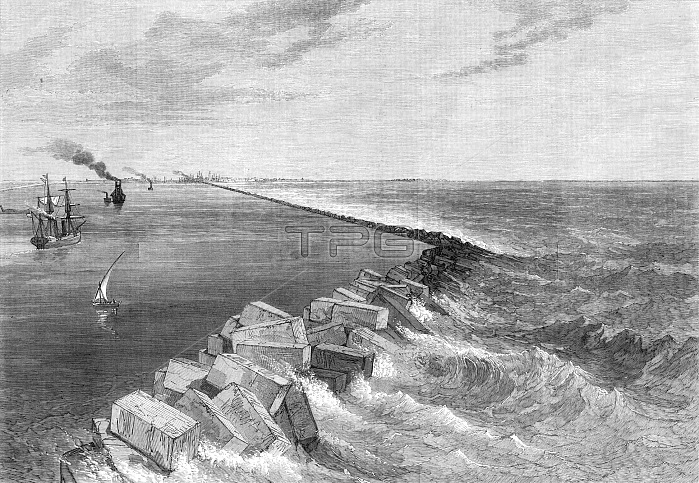
The Isthmus of Suez Maritime Canal: breakwater at Port Sa?d, and Mediterranean entrance to the canal, 1869. View from the sea of the new port and western breakwater. This harbour has been constructed by running out into the sea two breakwaters, or moles, which are formed of huge blocks of concrete. Each block measures twelve cubic yards, and weighs twenty-two tons, and is composed of two thirds sand and one third hydraulic lime. The lime is imported from France, the sand is dredged up here in the harbour. Each block cost about ?13. They are not laid as in masonry, but thrown down loosely. The breakwaters are intended to answer the double object of protecting vessels from heavy seas and of arresting the alluvium brought down by the river Nile in its passage towards the bay of Pelusus, so as to prevent its choking up the channel...the harbour is well protected from the strong and prevailing northwest winds. The portion of the harbour affording shelter to vessels is nearly 500 acres in extent; and, although the depth of water is not sufficient for the largest men-of-war, it is quite sufficient for ordinary merchantmen. From "Illustrated London News", 1869.
| px | px | dpi | = | cm | x | cm | = | MB |
Details
Creative#:
TOP29822521
Source:
達志影像
Authorization Type:
RM
Release Information:
須由TPG 完整授權
Model Release:
no
Property Release:
no
Right to Privacy:
No
Same folder images:

 Loading
Loading